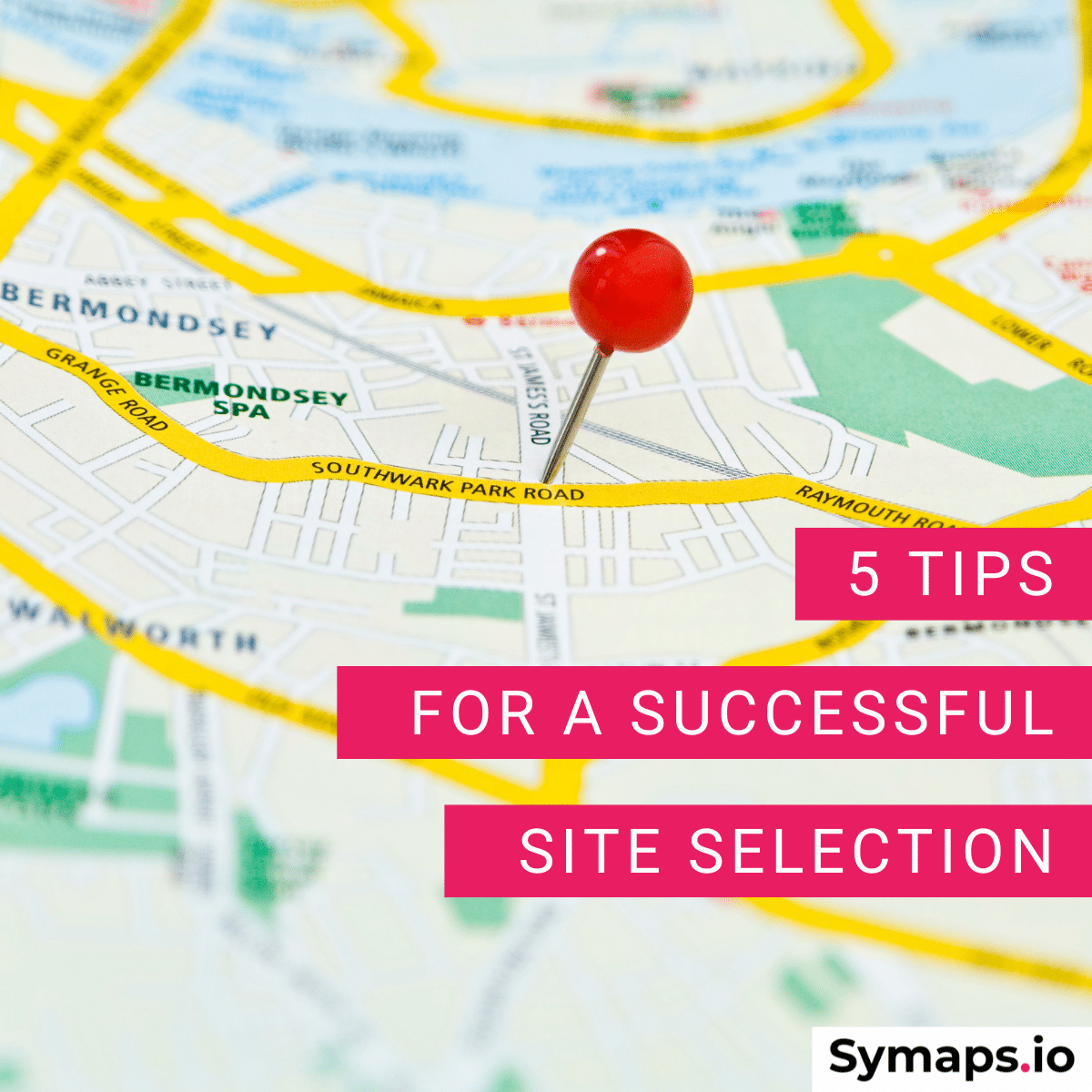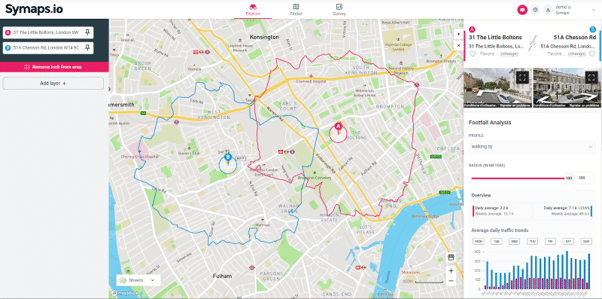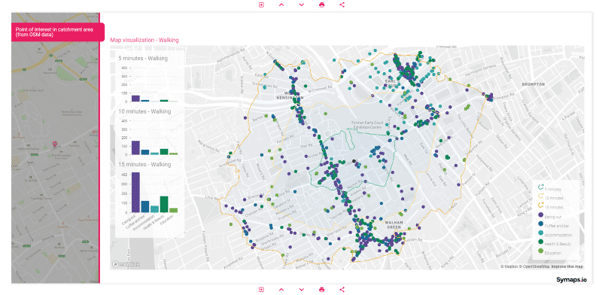5 Tips for a Successful Site Selection
Location is everything—this much is true whether you’re launching your business or expanding into a new geographic market.
However, site selection and the process of finding the right geographic location for your business can be incredibly daunting. With so many factors to consider, it’s sometimes difficult to know where to start.
We have put together some actionable advice for finding a profitable geographic location for your business.
Here are some practical tips to make your site selection process easier and ensure the successful establishment of your business in an ideal geographic location.

1. Assess the Commercial Potential of your Search Area
Before you begin searching for a location on the street level, it’s important to begin by defining your search area and then assessing it as a whole. Usually, this search area will be regional or even at town level.
You can carry a local market study to paint a picture of the defined search area using a range of data that is relevant to your business, including:
– Catchment Area how many people live and work in the area ?
– Demographics: what is the demographic profile of your target market? What % of the total population of the area is representative of your target market?
– Spending Power: what is the average disposable income of your potential clientele within your search area? Does that align with your target market?
– Footfall: how many people pass by your potential location each day? Is that enough to support your business? This is a crucial point to consider for businesses that rely on foot traffic—especially in the retail industry.
– Commercial Makeup: what other shops and businesses are located nearby? Will they compete with your business? What market share do you target ?

Get all the geomarketing data you need in one blink and maximise your retail site selection with the help of a location intelligence platform like Symaps !
2. Estimate Location-Based Costs
Of course, the commercial potential of your geographic location is only one factor to consider – you also need to be able to cover the costs of setting up your shop.
To get an accurate estimate of your location-based costs, you’ll need to consider a range of factors, including:
– Rent: how much will you need to pay for rent, based on the size and location of your premises?
– Utilities: what are the costs of water, gas, and electricity in your geographic location?
– Business Rates: how much will you need to pay in business rates?
– Insurance: what are the costs of business insurance in your geographic location
– Downtime: how long will the location need to be closed before you can begin earning revenue?
It’s important to get quotes for each of these costs when making your site selection. This will give you a realistic estimate of what it will cost to run your business from that location.
3. Identify Synergies with other Locations
Proximity is a powerful tool when it comes to expanding your business into new locations.
By choosing new locations that are relatively close to existing locations, you can take advantage of a number of synergies:
– Increased brand awareness: customers who live or work near your new location are more likely to be aware of your brand, thanks to the increased visibility that comes with proximity.
– Economies of scale: If you’re able to source supplies from the same supplier for multiple locations, you can take advantage of economies of scale to get discounts on your purchases.
– Reduced local marketing & communication costs: Local marketing and communication actions can be easily shared between several sales outlets around the same area for a better targeting and cost sharing.
– Simplified hiring and training: The proximity of different outlets can simplify the process of hiring and training new employees.
In many cases, these synergies can offset many of the costs of expanding into new geographic locations during the site selection process. As such, they should be taken into account when you’re assessing the commercial potential of new sites.
4. Map Out Competitors
While you’re mapping out your own network of locations, it makes sense to map out your competitors as well. This will give you a better understanding of the economic landscape and help you identify potential opportunities for expansion.
While a market that is too competitive is bad (for obvious reasons), too little competition is often just as problematic. In markets where there are few competitors, it can be difficult to find customers and generate enough revenue to sustain your business.

Cannibalisation study, distribution network optimisation, overlaps with competition…See how Symaps location intelligence solution can assist you in you retail site selection process.
5. Consider Accessibility and Parking
Accessibility is another crucial factor to consider during the site selection process when choosing a geographic location for your business. Ultimately, if potential customers cannot reach your business easily, it is unlikely that they will become actual customers.
There are a number of factors that can affect accessibility, including:
– Proximity to public transport: Is the location served by public transport?
– Proximity to major roads: Is the location near major roads, such as highways or interstates?
– Parking: Is there sufficient parking spaces available?

Conclusion
The choice of location is a critical aspect in setting up a successful business. Careful consideration and analysis is necessary to select a location that aligns with your project and business model. To ensure a successful establishment, it is essential to consider factors such as estimating the commercial potential of the area, including the size of the potential customer base and estimated revenue. Other factors to take into account are the installation and operating costs, identifying possible synergies with other nearby businesses, analyzing the economic activity of the area and its competition, and evaluating the accessibility and available transportation options.
Streamline Your Location Finding Efforts
Site selection – Strategic planning – Coverage analysis – Network optimisation – Expansion scenarii simulations – Local market research
Get started today with a free demo and see first-hand how Symaps location intelligence solution can help!
Share post
